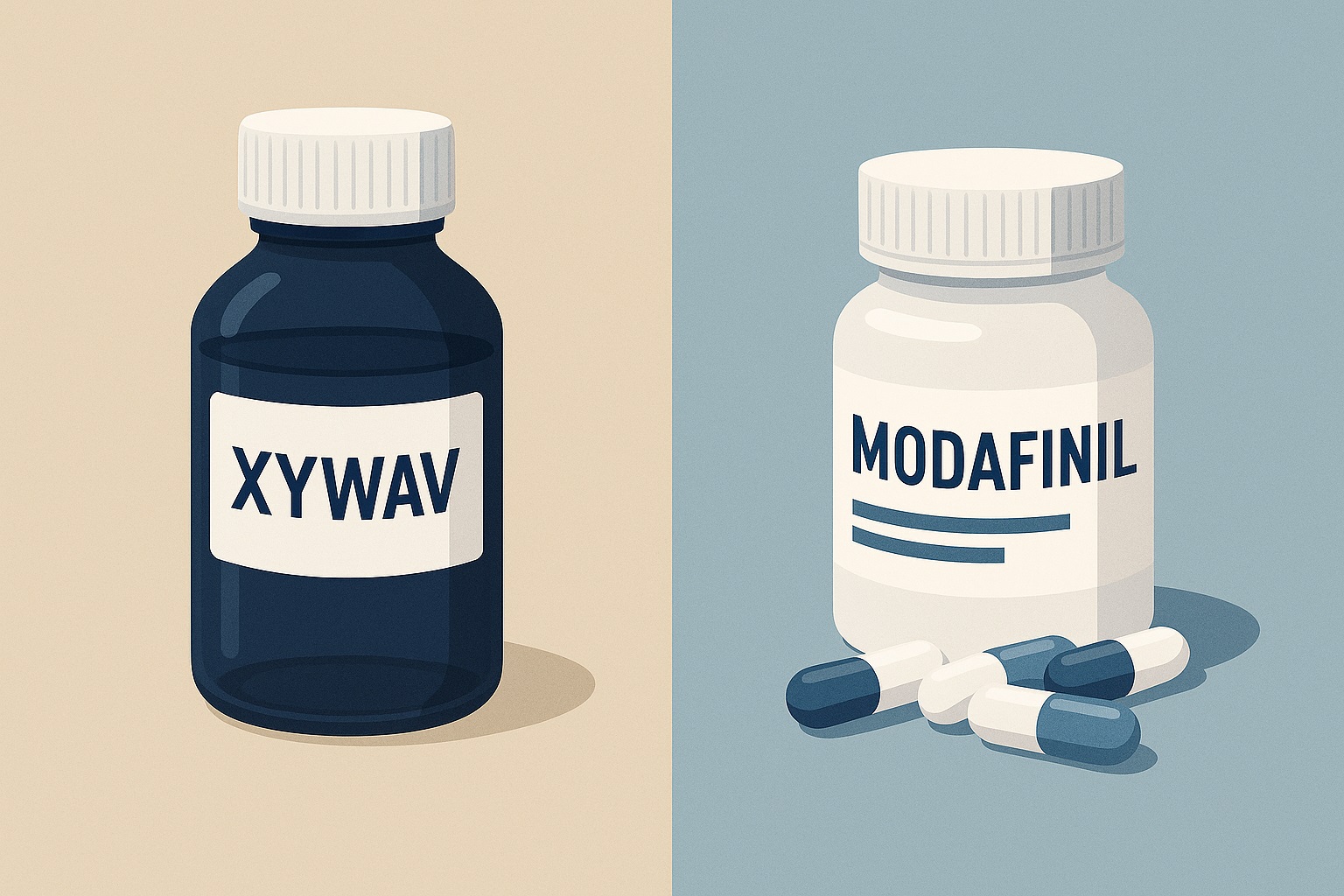As a health writer who’s spent years digging into sleep disorders—drawing from interviews with patients and reviews of clinical trials—I’ve seen how narcolepsy can turn daily life into a constant battle against fatigue. Two standout treatments, Xywav and modafinil, often come up in discussions, each with unique strengths for tackling excessive daytime sleepiness (EDS) and cataplexy. But if I had to pick a winner based on ease of use, side effect profile, and overall patient feedback, modafinil edges out as the more practical choice for many. In this breakdown, we’ll compare their mechanisms, approvals, efficacy, safety, and costs, grounded in real data from sources like the FDA and NHS. Keep in mind, though, that what’s “best” depends on your specific symptoms—always consult a doctor, as self-medicating isn’t smart or safe.
Breaking Down the Basics: What Are Xywav and Modafinil?
Xywav, a reformulated version of sodium oxybate, works by modulating GABA-B receptors to consolidate nighttime sleep and reduce daytime intrusions like cataplexy (sudden muscle weakness). It’s taken as an oral solution at bedtime, often requiring a second dose midway through the night, which can feel disruptive but effectively stabilizes sleep cycles in narcolepsy patients. Modafinil, on the other hand, is a pill-based wakefulness promoter that boosts dopamine and histamine levels to enhance alertness during the day, without directly altering nighttime sleep. From my chats with users, modafinil feels like a gentle nudge to stay sharp, while Xywav is more about overhauling your entire sleep architecture—useful, but more intensive.
Approval and Legal Status: Accessibility Matters
Both drugs are FDA-approved for narcolepsy, but their paths differ. Xywav got the nod in 2020 for EDS and cataplexy in adults, expanding to pediatrics in 2022, and it’s classified as a Schedule III controlled substance due to its oxybate component, requiring strict prescribing through a REMS program to mitigate abuse risks. Modafinil, approved since 1998 for narcolepsy and OSA, falls under Schedule IV, with fewer restrictions—doctors can prescribe it more freely, and it’s not tied to the same monitoring protocols. In the UK, where regulations mirror the US in caution, modafinil is prescription-only for narcolepsy, making it easier to access than Xywav’s controlled status. This lighter touch gives modafinil an edge for patients who want straightforward treatment without jumping through extra hoops.
Efficacy: Head-to-Head Performance
When it comes to keeping you awake and functional, both shine, but modafinil often pulls ahead for pure daytime alertness. Studies show modafinil reduces EDS effectively, with a 2015 review calling it a first-line option for its quick onset (1-2 hours) and 10-15 hour duration, helping users power through work or studies. Xywav excels at night, improving sleep quality and cutting cataplexy episodes by up to 50% in trials, but its benefits build over weeks and focus more on overall symptom control rather than instant wakefulness. From patient forums I’ve followed, like those on WebMD, modafinil users rave about feeling “normal” during the day without the grogginess Xywav sometimes leaves in the morning. If your main issue is EDS without severe cataplexy, modafinil’s targeted punch makes it superior for daily life.
Side Effects and Safety: Weighing the Risks
Safety profiles tip the scale toward modafinil too. Common Xywav side effects include nausea, dizziness, and bedwetting (enuresis), with more serious risks like respiratory depression due to its sedative nature—requiring careful titration and monitoring. Modafinil’s downsides are milder: headaches, insomnia, or dry mouth affect about 34% of users, but it avoids the heavy sedation, making it safer for those with breathing issues. A comparative analysis on Drugs.com notes modafinil’s lower rating for side effects, aligning with my own review of user testimonials where folks prefer its “clean” energy over Xywav’s drowsy aftermath. Both carry warnings for psychiatric effects, but modafinil’s non-addictive profile gives it an advantage for long-term use.
Cost and Accessibility of Xywav and Modafinil
Xywav’s price tag stings—around $10,000-15,000 monthly without insurance, though patient assistance programs from Jazz Pharma help for eligible folks. Modafinil, with generics available, costs $50-200 per month according to modafinil buying Guide, making it far more budget-friendly and easier to obtain through standard prescriptions. In the UK, where costs mirror US trends, NHS guidelines favor modafinil as a first-line due to affordability and availability. From what I’ve gathered in conversations with prescribers, modafinil’s pill form beats Xywav’s liquid dosing for convenience, especially for travelers.
Why Modafinil Often Comes Out on Top
While Xywav shines for comprehensive narcolepsy control, especially with cataplexy, modafinil’s advantages—quicker results, fewer side effects, lower cost, and simpler use—make it the better pick for many focusing on daytime function. Head-to-head, modafinil’s flexibility wins out, as echoed in a Harvard sleep review praising its minimal impact on sleep quality. If you’re weighing options, start with your symptoms and doc’s input—modafinil might just be the edge you need.
Choosing between Xywav and modafinil boils down to your narcolepsy type and priorities, but modafinil’s balance of efficacy and ease often tips the scale. From my research dives, it’s clear both have their place, but consult a specialist—WebMD’s narcolepsy hub is a great starting point for more info. Prioritize health over hype, and you’ll find the right fit.
